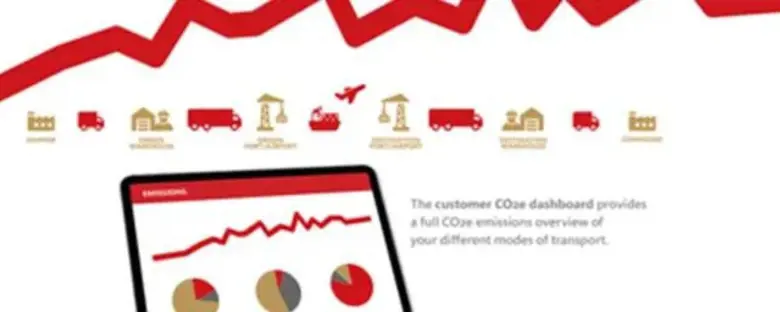News
Become first mover in carbon-reducing actions
08 Nov, 2021

To effectively make supply-chain decarbonization happen requires knowing your end-to-end emissions footprint in detail down to modes of transport. However, many companies struggle with their decarbonization efforts, particularly their transportation emissions (Scope 3*), since they lack a complete overview of their value chain emissions.
What if you …
- could get a complete overview of your customer and supplier emissions (Scope 3)?
- had full CO2e transparency?
- knew exactly where your CO2 reduction efforts would have the most impact?
As stakeholders increasingly demand lower emissions, delivering becomes a significant competitive advantage and license to operate for businesses.
Full transparency in transportation data
The CO2e report maps out and unfolds the complexity of customers' and suppliers' emissions and provides you with a complete overview of your CO2e emissions – down to specific data on transport modes, lanes and leg – including other logistics providers’ emissions (as a new feature).
Know where to best start your CO2-reduction
Designed to inform business decisions and steer efforts to reduce emissions, with the CO2e report, you can track your emissions performance progress on a year-on-year basis. With the actual value chain emissions in hand, the report may serve as a baseline for discussing exactly where and how to reduce your CO2 impact in your supply chain.
Sustainability reporting made easy
The CO2e report makes sustainability reporting easier.
We use the highest international standard for calculating CO2. Using the Calculation Methodology from EcoTransIT, based on the EN16258 standard for calculating Green House Gas (GHG) emissions, the CO2e overview meets the requirements from the GLEC* Framework and the Greenhouse Gas Protocol allowing you to use the numbers from the CO2e report directly in your emissions disclosure and sustainability reporting (Scope 3 transportation emissions).
Sustainability reporting can’t get any easier – and more correct – than that.
Carbon offsetting program
To mitigate the unavoidable CO2 emissions, we make carbon offsets available to our customers. Renewable energy projects that reduce emissions elsewhere are measured in the UN Certified Emission Reductions (CERs) generated from Clean Development Mechanism (CDM) projects located in developing countries.
|
What is included in the CO2e overview report: The results from our GHG emission calculations are the following:
CO2e is the "Carbon dioxide equivalent," an emission measurement that accounts for CO2 and all other GHG emissions. This figure is commonly used to represent the actual emission of a company. Order your report monthly, quarterly, biannual, or yearly, and get it within days. |
(Scope 3*):
Emissions are categorized into three Scopes in the Greenhouse Gas (GHG) Protocol. Scope 1 covers direct emissions from owned or controlled sources. Scope 2 covers indirect emissions from the generation of purchased electricity, steam, heating and cooling consumed by the reporting company. Scope 3 includes all other indirect emissions that occur in a company’s value chain including emissions from transportation.
GLEC*: Global Logistics Emissions Council

